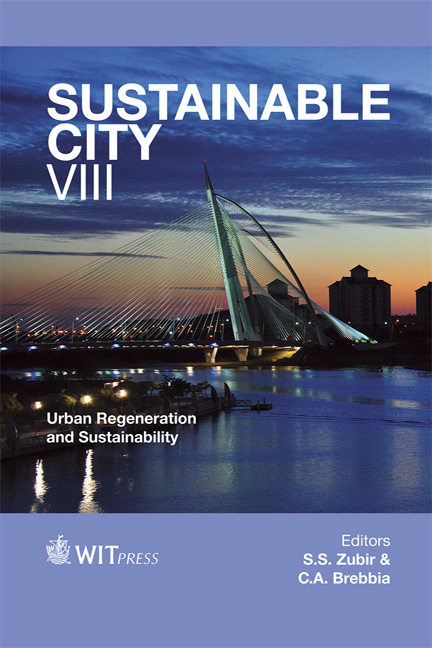Core/periphery Spatial Interrelation In Historic Cities: Tripoli (Lebanon) As A Case Study
Price
Free (open access)
Transaction
Volume
179
Pages
9
Page Range
131 - 139
Published
2013
Size
2,303 kb
Paper DOI
10.2495/SC130111
Copyright
WIT Press
Author(s)
N. Mohareb
Abstract
‘Societies control the boundaries that they create’ (Madanipour, Public and private spaces of the city, 2003). Throughout history, urban peripheries have evolved and been transformed, creating forms of distinction. Emphasising those peripheries affects those social relationships that take a spatial form and, overtime, will cause a changing social phenomenon. Although the periphery of historic cores is indeed a spatial separating edge, it is at the same time the threshold that leads to the outside realm through the edges’ spatial and visual connectivity. Prior to any regeneration interventions, it is crucial to understand the current situation of the historic core, in addition to analysing the core/periphery interrelation. This spatial interrelation analysis would contribute effectively to the decision-making related to sustainable regeneration projects and the prosperity of the historic core that increases the liveability of our cities. The current usage of spatial configuration is limited to either analysing the core of the city or examining its outer urban growth, while studying the edge itself, between the historic core and the outer urban growth, is ignored. This paper aims to investigate the core/periphery interrelation based on their spatial configuration in historic cities, with a special reference to Tripoli (Northern Lebanon) as a case study. The paper develops an appropriate framework to analyse that interrelationship. This analysis will verify whether the urban historic periphery acts as a barrier in its various conditions, and examines its mutual effects on both sides of the periphery that might affect the ‘liveability’ of the historic core of Tripoli city. Keywords: core/periphery interrelation, historic core, urban historic edges.
Keywords
Keywords: core/periphery interrelation, historic core, urban historic edges.





